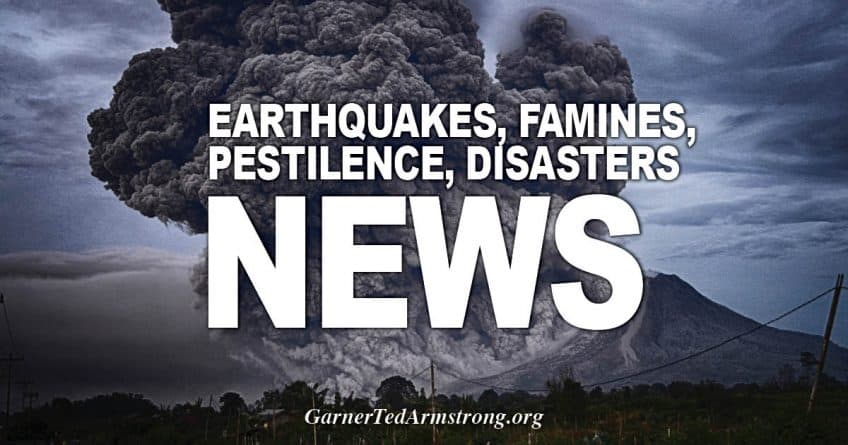Large and violent Florence is continuing on a beeline toward the East Coast as an “extremely dangerous” Category 4 hurricane. Catastrophic flooding and destructive winds are becoming very likely in the eastern Carolinas.
Forecasts generally project the storm to make landfall between northern South Carolina and North Carolina’s Outer Banks as a strong Category 3 on Thursday, although shifts in the track are possible and storm impacts will expand great distances beyond where landfall occurs.
The National Hurricane Center is warning of an “extremely dangerous” triple threat in the Carolinas and Virginia:
- A “life-threatening storm surge” at the coast — a rise in ocean water over normally dry land.
- “Life-threatening freshwater flooding from a prolonged and exceptionally heavy rainfall event” from the coast to interior sections.
- “Damaging hurricane-force winds” at the coast and some distance inland.
Like Hurricane Harvey, which stalled over Texas in 2017, Florence could linger over the Southeast for several days after landfall, unloading 15 to 20 inches of rain and isolated amounts to 30 inches. The Hurricane Center said this “could produce catastrophic flash flooding.”
The flooding might be similar to or worse than what the Carolinas experienced during Hurricane Matthew in 2016.
More than 1.5 million people have already been ordered to evacuate coastal areas ahead of the storm, due to both destructive winds and storm surge which could place normally dry land under at least 10 feet of water.
“All interests from South Carolina into the Mid-Atlantic region should ensure they have their hurricane plan in place and follow any advice given by local officials,” the Hurricane Center said.
[What to put in your emergency supply kit]
The latest
As of 11 a.m., Florence’s top winds decreased to 130 mph, but the storm is expected to regain strength later in the day. It was tracking west-northwest at 16 mph, and located about 900 miles east-southeast of Cape Fear, N.C.
The Hurricane Center is calling the storm “extremely dangerous,” and predicts its maximum winds could still reach 150 mph at peak intensity, which is just 7 mph from Category 5. Some modest weakening may occur just before landfall, but Florence is predicted to come ashore as a strong Category 3 with 120 mph sustained winds.
The center issued hurricane and storm surge watches for the East Coast from Edisto Beach, S.C., northward to the North Carolina-Virginia border, including the Pamlico and Albemarle sounds.

Track forecast for Hurricane Florence. Hurricane watch zone is shaded in pink. (National Hurricane Center)
As Florence explosively strengthened Monday, its zone of hurricane-force winds doubled in size and extend 40 miles from the center while tropical-storm-force winds extend 150 miles outward.
Storm timing
In coastal areas of the Southeast and Mid-Atlantic, heavy surf and elevated water levels are expected to arrive by Wednesday morning, and rainfall could begin by late Wednesday night and Thursday morning.
Tropical-storm-force winds could reach the coastline as early as late Wednesday night or Thursday morning, at which point all outdoor preparations should be completed.
Extremely dangerous hurricane-force winds could batter coastal locations Thursday into Friday. Hurricane-to-tropical-storm-force winds could extend well inland, depending on the storm’s track.

Storm hazards
Storm surge
Like a bulldozer, the storm’s winds and forward motion will push a tremendous amount of water onshore when it makes landfall. The storm surge, or rise in water above normally dry land at the coast, could reach up to more than a story high, or 12 feet, if the maximum surge coincides at high tide.
Jeff Masters, the meteorologist who pens Weather Underground’s Category 6 blog, reported a maximum surge of 15 to 20 feet is possible which would rival heights from hurricanes Hugo (1989) and Hazel (1954).
The biggest surge should occur just to the north of where the eye of the storm comes ashore, which the Hurricane Center projects in southeast North Carolina.
The surge will result in inundation of roads, homes, and businesses.
Storm surge watches have been posted from Edisto Beach in South Carolina to the North-Carolina Virginia border and over the Albemarle and Pamlico Sounds.

The Hurricane Center projects the following surge heights above normally dry land, if the maximum surge coincides with high tide:
- Edisto Beach to Murrells Inlet: 2 to 4 feet
- Murrells Inlet to Cape Fear: 4 to 6 feet
- Cape Fear to Cape Lookout including The Neuse and Pamlico River: 6 to 12 feet
- Cape Lookout to Ocracoke Inlet: 5 to 8 feet
- Ocracoke Inlet to North Carolina/Virginia Border: 3 to 5 feet
Rain
Models have come into agreement that a northward turn before reaching the United States is unlikely and that a building high-pressure zone north of the storm will cause it to slow or stall once it reaches the coast or shortly thereafter Where exactly the zone of heaviest rain will be is a big uncertainty. It could reasonably occur anywhere between the mountains and the coast.
[Hurricane Florence could be a lot like Harvey. Here’s why.]
If the storm stalls, some areas could see feet of rain, especially if downpours focus over the higher terrain in western North Carolina and southwestern and central Virginia.
However, some of the latest forecast models suggest the heaviest rainfall could focus on the eastern Carolinas.

If the storm drifts into Virginia, this region will be particularly susceptible to flooding because of far-above-normal rainfall in the region since May. In addition, because the ground is likely to be saturated, trees will be vulnerable in strong winds.
[What will Hurricane Florence mean for the Washington area?]
Parts of the Mid-Atlantic, especially from Virginia to Pennsylvania, have received 150 to 300 percent of their normal rainfall since May.

Wind
The strongest winds will occur where and when the storm makes landfall in a ring around the calm eye of the storm known as the eyewall. If the storm makes landfall as a Category 4, these winds will be destructive, sustained at up to 130 mph or so with higher gusts.
The zone where these intense winds occur will be narrow but the effects will likely be devastating, similar to a strong tornado. The Hurricane Center describes the types of damage associated with Category 4 winds:
Well-built framed homes can sustain severe damage with loss of most of the roof structure and/or some exterior walls. Most trees will be snapped or uprooted and power poles downed. Fallen trees and power poles will isolate residential areas. Power outages will last weeks to possibly months. Most of the area will be uninhabitable for weeks or months.
Outside of this zone of destructive winds, damaging winds are still likely, even some distance inland from the coast, which will lead to minor structural damage, downed trees, and widespread power outages.
If the storm stalls in eastern Carolinas as or just after the storm makes landfall, these wind impacts will be magnified.
The latest path projections
Where the storm makes landfall has implications for where the strongest winds and biggest rise in water at the coast occurs, but strong winds and extreme rainfall could occur at great distances from the landfall location. Keeping this in mind, here is the likelihood of landfall at different locations based on our evaluation of model data:
- 80 percent in the Carolinas
- 10 percent offshore
- 5 percent between northern Florida and Georgia
- 5 percent north of the Carolinas
Even in the unlikely event that the storm center remains just offshore, it will almost certainly come close enough to bring dangerous wind and flooding to coastal areas. Areas farther to the north and west may be somewhat spared in this scenario.
While the storm is expect to unleash its worst effects on the Carolinas and Virginia, residents farther north in coastal and inland areas in the Delmarva Peninsula, New Jersey, Pennsylvania and New York should also monitor the storm and prepare in case the forecast shifts to the north and east after landfall.
Florence’s place in history
If Florence makes landfall as a Category 4 in North Carolina, it would be the strongest storm to come ashore that far north on record.
If a major hurricane (Category 3 or higher) does make landfall along the Southeast coast, the rarity of such an event is relevant. Since 1851, only 10 major hurricanes have done so, and the most recent was Fran in 1996, 22 years ago. Hugo in 1989 was the one before that and was a Category 4 at landfall. No hurricane has made landfall as a Category 5 in this region on record.
Many people in the Southeast and Mid-Atlantic probably have not experienced a storm of the potential magnitude of Florence.

[Disclaimer]








